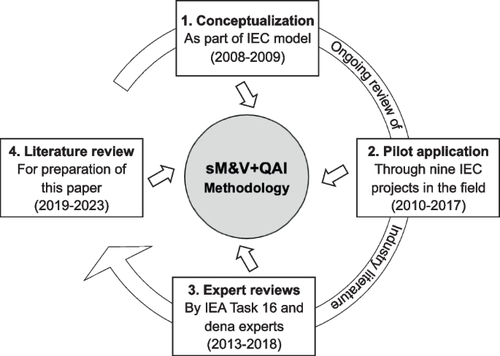Energy Efficiency ( IF 3.1 ) Pub Date : 2024-04-11 , DOI: 10.1007/s12053-024-10195-z Jan W. Bleyl , M. Robertson , S. Mitchell , P. Thollander

|
Energy efficiency (EE) is our “first fuel” and an essential resource in reaching climate goals, reducing dependence on fossil fuels, increasing security of supply, and many other “Multiple Benefits.” However, by their nature, savings are intangible. Demand-side EE measures are typically decentralized, heterogeneous, and small-scale opportunities. The difficulties in measurement and verification (M&V) of “Negawatts” are an important and often overlooked barrier to their greater application.
M&V is a prerequisite to assess the performance of any energy, water, or CO2-saving measure, and to quantify the savings into physical and monetary units for reporting, re-financing, GHG accounting, or other purposes. However, in practice, M&V is often perceived (particularly by clients) as cumbersome, incomprehensible, and costly.
In the broader context, energy cost savings alone are often not a sufficiently strong project driver because they lack strategic relevance for decision makers. As “Multiple Benefits” of EE become better understood, the value of quantifying savings to a high degree of accuracy may be declining, creating opportunities for more flexible M&V standards.
As a new methodology, this conceptual paper proposes to combine simplified M&V (sM&V) for individual EE measures with quality assurance instruments (QAIs) to verify functionality. This “sM&V + QAI” approach is less cumbersome, less costly, and easier to comprehend than standard M&V approaches, particularly by clients, financiers, and other non-M&V experts. It has been reviewed by international experts and successfully tested and evaluated in the field. Multiple case studies are reported to verify its practical feasibility.
中文翻译:

简化的测量和验证与质量保证仪器相结合:一种更实用、更容易实现的节能 M&V 方法
能源效率 (EE) 是我们的“第一燃料”,也是实现气候目标、减少对化石燃料的依赖、提高供应安全以及许多其他“多重效益”的重要资源。然而,就本质而言,节省是无形的。需求方能效措施通常是分散的、异构的和小规模的机会。 “负瓦”的测量和验证(M&V)困难是其更大应用的一个重要且经常被忽视的障碍。
M&V 是评估任何能源、水或CO 2节约措施绩效的先决条件,并将节约量量化为物理和货币单位,以用于报告、再融资、温室气体核算或其他目的。然而,在实践中,M&V(尤其是客户)常常被认为是繁琐、难以理解且成本高昂的。
在更广泛的背景下,能源成本节约本身往往不足以成为足够强大的项目驱动因素,因为它们与决策者缺乏战略相关性。随着 EE 的“多重好处”得到更好的理解,高精度量化节省的价值可能会下降,从而为更灵活的 M&V 标准创造机会。
作为一种新方法,本概念文件建议将单个 EE 措施的简化 M&V (sM&V) 与质量保证工具 (QAI) 结合起来以验证功能。这种“sM&V + QAI”方法比标准 M&V 方法更简单、成本更低,并且更容易理解,尤其是客户、金融家和其他非 M&V 专家。经过国际专家评审,并成功进行了现场测试和评估。报告了多个案例研究来验证其实际可行性。



























 京公网安备 11010802027423号
京公网安备 11010802027423号